The Creative Process Behind Designing FOGYX's Game Worlds
In this article, we’re pulling back the curtain to give you an inside look at the creative process behind designing FOGYX’s game worlds. Whether you’re a fellow game designer or just a curious gamer, we’ll take you through how our worlds come to life, starting from the initial brainstorming to the moment players step into the vibrant, dynamic environments that define our games.
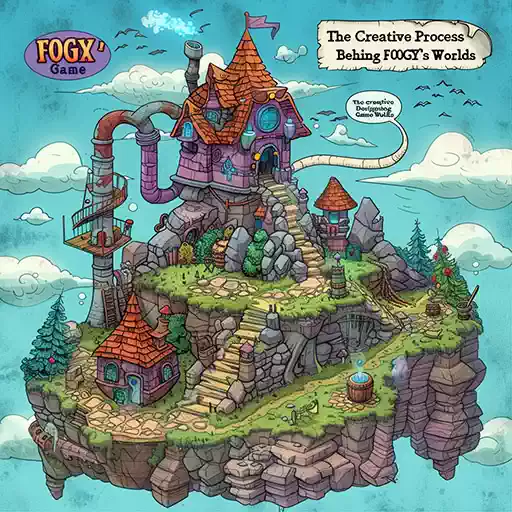
1. Conceptualizing the World: Where It All Begins
Every game world begins with an idea. It could be sparked by a book, a movie, or a moment of inspiration from everyday life. At FOGYX, we start by brainstorming broad themes that can shape the foundation of the game world. These early discussions focus on answering key questions: What is the tone of the game? Is it fantasy, sci-fi, or perhaps a blend of both? Are the players exploring an open-world adventure, or are they navigating levels within a set environment?1.1 Defining the Narrative and Purpose
At the core of any game world is its narrative—the story that the world tells. This story doesn’t always need to be spelled out explicitly, but it should be present in every design choice, from the architecture of the buildings to the types of creatures that inhabit the land.For example, in our free game Mystic Realms, the concept was simple: a magical world where players could wield elemental powers. From there, the world began to take shape. Would players explore ancient ruins? Navigate enchanted forests? By defining the narrative early, we ensure that every corner of the world feels intentional and cohesive, guiding players through an experience that feels meaningful and connected.
1.2 Building with Player Experience in Mind
Of course, we don’t design game worlds in isolation from the players who will inhabit them. Player experience is always at the forefront of our creative process. We consider how players will interact with the environment, what challenges they’ll face, and how the design will enhance the gameplay mechanics. Our goal is to create worlds that are not just visually appealing but also immersive—places where players can get lost in exploration or enjoy intense action.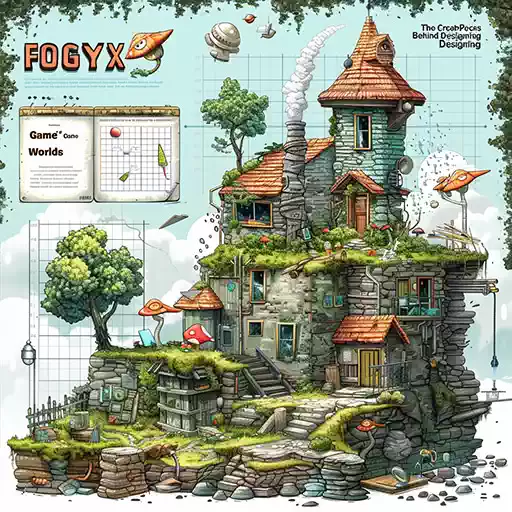
2. The Art of Visual World-Building
Once the concept and narrative are in place, it’s time for the visual world-building to begin. This stage is where the creative magic really starts to happen. Our team of talented artists and designers take the ideas and turn them into something tangible—crafting the look and feel of the world, from its broad landscapes to the smallest details.2.1 Sketching and Concept Art
Before anything is rendered in 3D or programmed into the game, it starts with sketches and concept art. These rough drawings help us visualize what the game world could look like. We sketch out the geography of the world, the style of the architecture, and the designs for characters and creatures. This is where experimentation happens. Should the buildings have a medieval feel or something more futuristic? Should the environment feel lush and vibrant or dark and foreboding?For our free game Realm of Shadows, we drew inspiration from gothic architecture and medieval fantasy, experimenting with different structures and terrain to give the world a brooding, mysterious vibe. The sketches help us determine the right mood before we dive into the detailed art.
2.2 Colors, Textures, and Atmosphere
After the initial sketches are finalized, the next step is to develop the color palettes and textures that will bring the world to life. Color is an essential tool for setting the tone of a game world—lush greens and bright blues can evoke feelings of serenity and peace, while deep reds and purples can create an atmosphere of danger or mystery.Textures play an equally important role in giving depth to the environment. From the rough surfaces of stone walls to the shimmering waters of an enchanted lake, textures make the world feel more tangible and real. We experiment with different styles to ensure the game’s art direction aligns with its narrative and gameplay. For example, the bright, cartoon-like aesthetic in FOGYX Island was chosen to create a light-hearted and fun atmosphere, inviting players into an engaging and playful world.
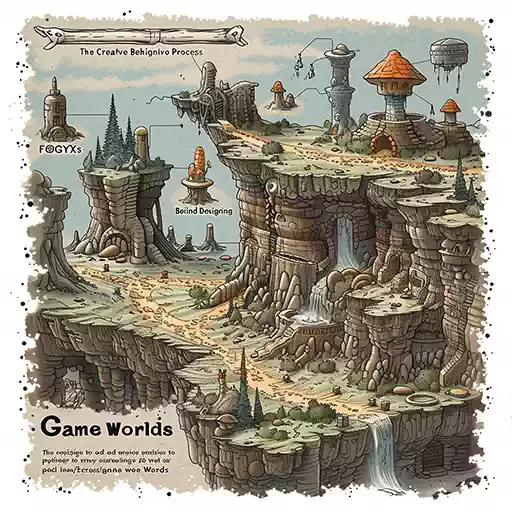
3. Designing Interactive Environments
A beautiful game world is one thing, but at FOGYX, we believe that a world should feel alive and interactive. This means designing environments that players can engage with—whether it’s solving puzzles, discovering hidden areas, or interacting with NPCs (non-player characters).3.1 Crafting Dynamic Worlds
A key feature of FOGYX’s online games is that they don’t just exist as static environments; they’re dynamic worlds that evolve with the player. Weather systems, day and night cycles, and environmental changes based on player actions are all part of our effort to make the game world feel responsive and interactive.In our game Quest for Eternity, for example, we introduced a changing world where the environment could be altered by players' decisions—forests might wither, cities could crumble, and landscapes could shift, making each player’s journey feel unique.
3.2 Layering Secrets and Challenges
No FOGYX game world is complete without secrets, hidden treasures, and challenges scattered throughout. We design our worlds to reward exploration, encouraging players to dig deeper and discover hidden layers that might not be apparent at first glance. Whether it’s a hidden cave containing rare loot or a cryptic puzzle that leads to a legendary weapon, these elements keep the world feeling rich and engaging.Our design team ensures that each secret feels like a reward for curiosity, giving players the thrill of discovery. It’s not just about reaching the next objective but about the journey and what players can uncover along the way.
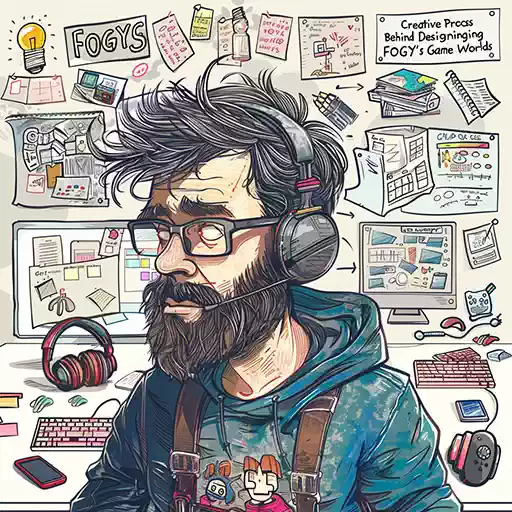
4. Collaborating Across Teams for Seamless Integration
Designing an engaging game world isn’t just the work of the art department. It’s a collaborative effort that requires input from developers, writers, sound designers, and more. At FOGYX, we emphasize cross-department collaboration to ensure that every aspect of the world—from its visuals to its gameplay—fits together seamlessly.4.1 Integrating Gameplay Mechanics
The best game worlds don’t just look good—they feel good to play in. Our developers work closely with the design team to ensure that the world we’re creating aligns with the gameplay mechanics. For instance, if the game involves a lot of vertical exploration, the environment needs to include cliffs, mountains, or towers that encourage climbing and traversal.Similarly, we work to integrate interactive elements that support the core gameplay loop. If the game revolves around collecting resources, we need to ensure that the world is populated with various materials, herbs, or minerals that players can find and use.
4.2 Audio Design: Bringing the World to Life
No game world is complete without sound. Audio plays a crucial role in making the environment feel immersive, from the subtle rustle of leaves in the wind to the echoing footsteps in a cavern. Our sound designers work tirelessly to create ambient sounds and musical scores that match the tone of the world, enhancing the overall experience.In games like Echoes of Avalon, sound cues are used to guide players through the environment, helping them detect hidden dangers or locate important objectives. By aligning audio design with visual and gameplay elements, we create a world that feels truly alive.
5. Constant Refinement: Testing and Polishing
Creating a game world doesn’t stop once it’s built—it’s an ongoing process that involves constant testing, refining, and polishing. We test our worlds to ensure that every environment is fun to explore, every challenge is balanced, and every visual element feels polished and cohesive.We take feedback from our players seriously, using beta tests to gather insights on how the world feels to navigate and interact with. If a certain area feels too empty or a puzzle is too difficult, we make adjustments to ensure the game world is as engaging as possible.
Conclusion: Crafting Worlds that Inspire
At FOGYX, we’re passionate about creating game worlds that do more than just entertain—they inspire, captivate, and challenge players. From the first concept sketch to the final game release, our creative process is driven by the desire to build immersive, interactive universes that players can lose themselves in.Whether you’re navigating a mystical realm, battling fierce enemies, or discovering hidden secrets, each FOGYX game world is designed to offer a unique, memorable experience. And as we continue to push the boundaries of what’s possible in online games and free games, we can’t wait to show you the new worlds we’ll create next.
31 December 2024
More articles
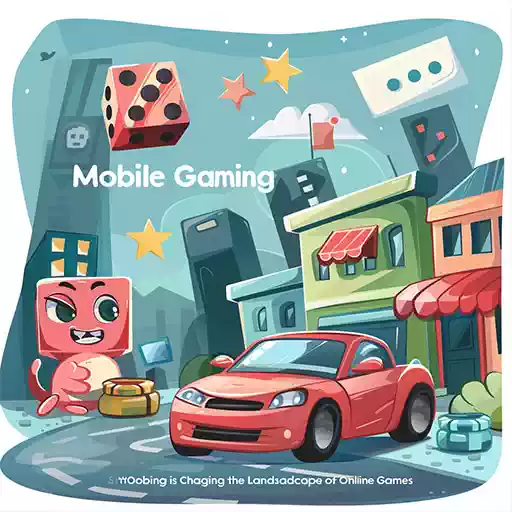
In recent years, mobile gaming has taken the world by storm. What was once seen as a casual pastime has transformed into a global phenomenon, fundamentally reshaping the landscape of online games. From strategy games to action-packed adventures, mobile gaming has found its way into the lives of billions of people worldwide. But how did mobile gaming manage to change the rules of the game (pun intended), and what does this mean for the future of online gaming? Let’s dive into how mobile gaming is revolutionizing the industry, explore the latest trends, and understand why it’s here to stay.
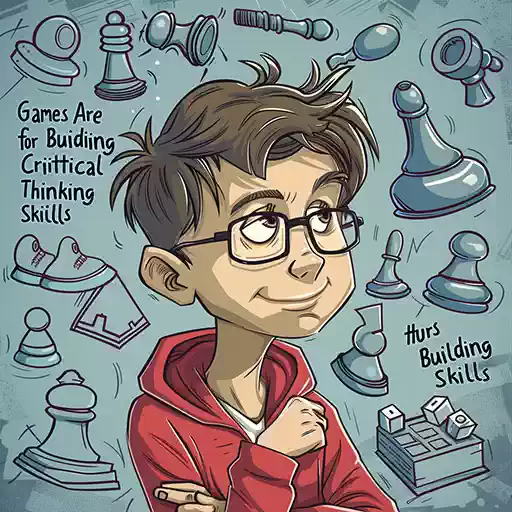
Have you ever found yourself spending hours engrossed in a strategy game, carefully planning your next move, balancing resources, and outmaneuvering your opponents? If so, you’re not alone. Strategy games have been capturing the attention of gamers for decades, not just because they’re fun but because they challenge us in ways other genres often don’t. Whether it’s chess, a real-time strategy game like Starcraft, or turn-based classics like Civilization, these games make us think deeply and critically.

In today’s gaming world, the days of releasing a game and calling it “finished” are long gone. Players now expect their favorite titles to grow and evolve, not only with fresh content but also in response to their feedback. At FOGYX, we believe that listening to our players is essential to creating games that not only entertain but also continuously improve. Incorporating player feedback into our game updates ensures that we’re meeting the needs of our community while maintaining a dynamic and engaging experience.
all articles
